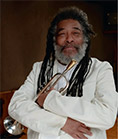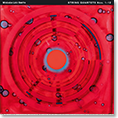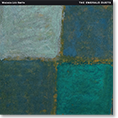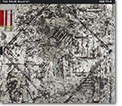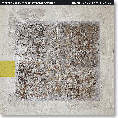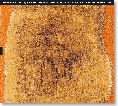THE MUSICIANS
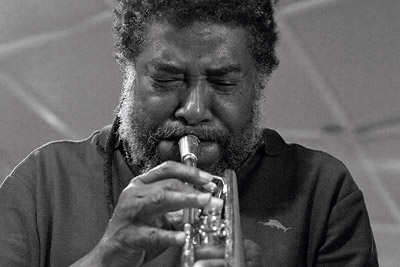
Wadada Leo Smith (b. 1941) was born in Leland, Mississippi. Smith´s early musical life began in the concert and marching bands of Lincoln High School in Leland, first on the mellophone, then moving on to the French horn and finally receiving his first trumpet at the age of 12. At the same age, he composed a work for three trumpets, his first composition.
Smith received his initial musical education from his stepfather, Alex "Little Bill" Wallace, who was one of the first Delta blues singers to begin playing the electric guitar. His family home in Leland was a meeting place for musicians where blues artists, such as Elmore James, B.B. King and Little Minton, were frequent guests, often performing in the family´s living room. Accordingly, Smith has said that: "The Blues was my first language and it never went away." As a trumpeter, Smith considers himself a descendant of Louis Armstrong, although Miles Davis, Booker Little, Clifford Brown and, a bit later, Don Cherry had the strongest impact on his own playing as a young musician.
Smith´s formal music studies began with Earl Jones and Henderson Howard, who were his school bandmasters at Lincoln High, with the latter also being his first trumpet teacher. Smith later studied at the U.S. Army School of Music at Fort Leonard Wood in Missouri (1963), the Sherwood School of Music in Chicago, Illinois (1967-69), and the Wesleyan University in Middlewood, Connecticut (1975-76). His own music theory and notational system for improvisation in an ensemble context, which he calls "Ankhrasmation," has been significant in his development as an artist and educator. Smith published his music philosophy already in the early 1970s in notes (8 pieces), source a new world music: creative music (Kiom Press, 1973).
After high school, Smith travelled for about a year with various blues, rhythm ‘n´ blues and soul groups before entering the U.S. Army. In addition to attending the U.S. Army School of Music, Smith played for a total of about five years in six different army bands, touring not only in the Southern United States, but also in France and Italy. He also continued to broaden his musical horizons and was leading his own Ornette Coleman-inspired trio while still in the military. In 1967, Smith left the army and moved to Chicago to work with saxophonist Anthony Braxton and other members of the Association for the Advancement of Creative Musicians (AACM), the creative music collective that combined the music´s African roots with an improvisational approach.
Soon after arriving in Chicago, Smith met Anthony Braxton and violinist Leroy Jenkins for an impromptu practice session and, as a result, the three founded the Creative Construction Company, a collaborative group that became one of the key early ensembles of the AACM. Smith´s other collaborators in the pioneering work of the AACM included saxophonists Joseph Jarman, Roscoe Mitchell and Kalaparusha Maurice McIntyre, trumpeter Lester Bowie, trombonist George Lewis and pianist Muhal Richard Abrams.
Smith´s first recordings were also made in Chicago during this period under the leadership of Braxton (3 compositions of new jazz in 1968 and Silence in 1969; these albums included Smith´s first recorded compositions, "The Bell" and "Silence," respectively, which already used the rhythm-units concept, a framework for improvisation that Smith developed more fully in the 1970s), McIntyre (Humility In The Light Of The Creator in 1969) and Abrams (Young At Heart, Wise In Time in 1969).
Like many other AACM members, Smith supported himself by playing in the horn sections of various rhythm ‘n´ blues and soul bands, including Little Milton Campbell´s group. In 1969, Smith turned down Little Milton´s offer to become the straw-boss of his road band and moved to Paris along with Anthony Braxton and Leroy Jenkins as well as a few other key members of the AACM. During his year in Paris, Smith took part in two important recordings by Braxton for the BYG Actuel label (Anthony Braxton in 1969 and This Time… in 1970) with a quartet that also included Jenkins and drummer Steve McCall. However, perhaps the most legendary line-up of this period was an expanded version of the Creative Construction Company (with Smith, Braxton, Jenkins, Muhal Richard Abrams, bassist Richard Davis and McCall), which was recorded live in May 1970 in connection with the AACM´s first concert in New York City (Creative Construction Company and Creative Construction Company 2). Smith worked with Braxton throughout the 1970s, including in Braxton´s quartet with Smith, bassist Dave Holland and drummer Phillip Wilson and other small groups as well as on Braxton´s classic big band recordings Creative Orchestra Music 1976 and Creative Orchestra (Koln) 1978. Since that time, Braxton and Smith have continued to play together from time to time.
After his year in Paris, Smith led his own group, Integral,with saxophonist Henry Threadgill, trombonist Lester Lashley and drummer Thurman Baker, for a few months in Chicago before settling in New Haven, Connecticut, during the summer of 1970 for a period of ten years. In New Haven, Smith concentrated on his own music as well as studying and teaching rather than touring and recording all over the world like many of his compatriots. In addition to leading his own groups and teaching at the University of New Haven, he studied ethnomusicology at the Wesleyan University, focusing on West African, Japanese, Indonesian and Native American music cultures. Soon after arriving in New Haven, Smith organized the Creative Improvisation Ensemble with saxophonist Marion Brown and they also recorded a duo album in December 1970 in New York City (Creative Improvisation Ensemble/Duets).
Smith´s first recording as a leader was a solo album (Creative Music-1 in 1971), which was also the first album released on Kabell, the independent record label he founded. After this first solo recording, Smith has continued to perform solo concerts and has recorded three additional solo albums (Solo Music/Ahkreanvention in 1979, Kulture Jazz in 1992 and Red Sulphur Sky in 2001).
Smith´s principal ensemble in New Haven, New Dalta Akhri, was comprised of his students and other young musicians based in the area and recorded a number of albums (Reflectativity, Song of Humanity, The Mass Of The World, Divine Love, Spirit Catcher and Go In Numbers). At various times, its members included saxophonists Dwight Andrews, Oliver Lake and Henry Threadgill, pianist Anthony Davis, vibraphonist Bobby Naughton, guitarist Michael Gregory Jackson, bassist Wes Brown and drummer Pheeroan akLaff. Members of New Dalta Akhri were also part of the two large orchestras responsible for Smith´s first big band recordings, Leo Smith Creative Orchestra (Budding Of A Rose in 1979) and Leo Smith & The Creative Improviser Orchestra (The Sky Cries The Blues in 1981).
During the New Haven period, Smith recorded as a member of the Jazz Composer´s Orchestra under the direction of trumpeter/trombonist Clifford Thornton (The Gardens Of Harlem in 1974) and Leroy Jenkins (For Players Only in 1975). He also recorded with Marion Brown (Geechee Recollections in 1973), saxophonist Frank Lowe (The Flam in 1975 and Doctor Too-much in 1977), Bobby Naughton (The Haunt in 1976), Michael Gregory Jackson (Clarity in 1976), Phillip Wilson (Fruits in 1978) and Roscoe Mitchell (Sketches From Bamboo in 1979) and began his longstanding relationship with certain key figures in European improvised music, such as guitarist Derek Bailey (Company 5, Company 6 and Company 7, all in 1977, with the collective personnel of Bailey, trumpeters Smith and Steve Beresford, saxophonists Anthony Braxton, Steve Lacy, Evan Parker and Lol Coxhill, cellist Tristan Honsinger, bassist Maarten Altena and drummer Han Bennink) as well as bassist Peter Kowald and drummer Günter "Baby" Sommer (Touch The Earth in 1979 and If You Want The Kernels, You Have To Break The Shells in 1981).
In the early 1980s, Smith converted to Rastafarianism and recorded a series of albums that reflected this new spirituality, including Human Rights, Procession Of The Great Ancestry and Rastafari. The music that Smith performed around this time sometimes featured lyrics inspired by Rastafarianism and introduced elements of fusion jazz, reggae, funk and the blues into the music. Smith also became increasingly interested in presenting multi-media performances incorporating song, dance and drama.
In 1986, Smith began a series of trumpet/drums duos by recording a live concert with drummer Ed Blackwell (The Blue Mountain´s Sun Drummer,released on Smith´s Kabell label in 2010). This series also includes duo recordings with Adam Rudolph (Compassion in 2002), Günter "Baby" Sommer (Wisdom In Time in 2006), Jack DeJohnette (America in 2008) and Louis Moholo-Moholo (Ancestors in 2011, TUM CD 029). In recent years, Smith has also made a number of other duo recordings, including those with vibraphonist Gustavo Aguilar, trombonist Jeb Bishop, Anthony Braxton, guitarist John Coxon, pianist Matthew Goodheart, laptop computer artist Ikue Mori and poet Harumi Makino Smith.
In 1993, Smith accepted a teaching position at the California Institute of the Arts and has made Southern California his home ever since although he recently retired from full-time teching. Alongside teaching, Smith continued to lead his own groups, in particular N´Da Kulture, and recorded a number of highly acclaimed albums (e.g., Tao-Njia, Golden Hearts Remembrance, Light Upon Light, Luminous Axis and Reflectativity) as a leader. In the mid-1990s, Smith converted to Islam, which further strengthened and made more apparent his longstanding interest in the musical cultures of the East, including those of Japan and India.
After his move to California, Smith began performing with other improvising musicians based on the West Coast, such as saxophonists Mario Eneidi and Vinny Golia, bassists Adam Lane and Bertram Turetzky, members of the Rova Saxophone Quartet and guitarist Henry Kaiser (in Yo Miles!, a group co-led by Kaiser and Smith and dedicated to the music of Miles Davis´ electric period), while continuing his collaborations with the likes of Anthony Braxton, Douglas Ewart, Susie Ibarra, John Lindberg, Roscoe Mitchell, Matthew Shipp, Spring Heel Jack and John Zorn, among many others.
Smith currently leads five principal ensembles of his own: the Great Lakes Quartet, an all-star group with saxophonist/flutist Henry Threadgill, bassist John Lindberg and drummer Jack DeJohnette (The Great Lakes Suites, TUM CD 041-2, in 2012); the Golden Quartet, another all-star group that originally included pianist Anthony Davis, bassist Malachi Favors Maghostut and drummer Jack DeJohnette and, in later editions, pianist Vijay Iyer or Angelica Sanchez, bassist John Lindberg and drummer Pheeroan akLaff or Shannon Jackson (Golden Quartet in 2000, The Year Of The Elephant in 2002, Tabligh in 2005 and, expanded into the Golden Quintet with drummer Don Moye, Spiritual Dimensions - CD1 in 2008); Mbira, a trio with pipa player Min Xiao-Fen and Pheeroan akLaff (Dark Lady of the Sonnets in 2007, TUM CD 023); Organic, a larger group with instrumentation consisting primarily of electric string instruments (Spiritual Dimensions - CD2 in 2008 and Heart´s Reflections in 2010); and the Silver Orchestra, a large orchestra that recorded its first album in 2004 (Lake Biwa).
Smith has been a prolific composer throughout his career with works ranging from solo piano pieces to compositions for multiple orchestras. Already while in the military in the 1960s, Smith arranged both popular and classical music for the various military bands in which he played and also increasingly began composing his own music both for jazz groups and other ensembles. By the time Smith moved to Chicago in 1967, he had already composed several string quartettos and orchestral works. When working with other members of the AACM and, in particular, in the large ensembles led by Muhal Richard Abrams and others, Smith began to combine his compositional skills and the improvisational spirit of the early AACM ensembles in search of his own approach to orchestral improvisation.
By 1970, Smith had developed the two basic systems of music that he has utilized in his compositions ever since: the system of rhythm-units and the notation system he termed "ahkreanvention," which literally means to create and invent musical ideas simultaneously, utilizing the fundamental laws of improvisation and composition. With the rhythm-unit concept, each single sound or rhythm, or series of sounds or rhythms, is accepted as a complete piece of music. Each performer, in turn, is considered as a complete unit with each having his or her own center from which each performs independently of any other, whether performing in a small group or in an orchestral context. The independence of each sound-rhythm and the independence of each performer contributes to the liberation from time as a period of development and to its employment as an element of space instead.
Smith´s music for large ensembles has been performed throughout the world since 1969, developing from early works for more traditional big bands to compositions for multi-ensembles. Smith has received a number of awards and commissions as a composer and his compositions have been performed by numerous contemporary music ensembles, including the AACM Orchestra, the Kronos Quartet, the Da Capo Chamber Players, the New Century Players, the San Francisco Contemporary Music Players, the Contemporary Chamber Players (University of Chicago), the S.E.M. Ensemble, the Southwest Chamber Music, the Del Sol String Quartet, the New York New Music Ensemble, ne(x)tworks,the California E.A.R. Unit and the Oxford Improvisers Orchestra, among others.
In May 2012, Smith released his most extensive recording to date, Ten Freedom Summers, a four-CD collection of a total of 19 works composed over a period of 34 years and inspired by the civil rights movement in the United States. Ten Freedom Summers was recorded by the Golden Quartet (Smith, Anthony Davis, John Lindberg and Pheeroan akLaff) and the Golden Quintet (add drummer Susie Ibarra) together with Southwest Chamber Music and was short-listed for the Pulitzer Prize in Music.
In 2013, Smith released another important recording of larger works, Occupy The World (TUM CD 037-2), comprised of six extended compositions performed by TUMO, a 22-member improvising orchestra.
...
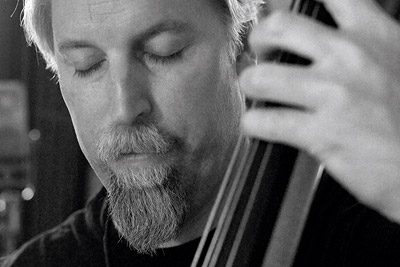
John Lindberg (b. 1959) was born in Detroit, Michigan, and grew up in the towns of Royal Oak and Marshall in Southern Michigan. He began playing percussion in school marching bands at the age of ten, moving to the drum set at the age of 14 after being inspired by a friend´s jazz album collection, which ranged from Louis Armstrong to the Art Ensemble of Chicago. Having shortly thereafter requested a double bass at school, Lindberg dedicated himself to the instrument and to the study of creative music, including with saxophonist Roscoe Mitchell who lived nearby. Rather than finishing high school, at the age of sixteen, Lindberg chose to pursue a professional career in music; leaving his family home and beginning the life of a working musician. Among his early teachers at the Creative Music Studio in Woodstock, New York, in the mid-1970s were Dave Holland and David Izenzon, with the latter also becoming an important mentor to Lindberg.
After settling in New York City, Lindberg played with saxophonists Frank Lowe (Lowe & Behold in 1977) and Marion Brown as well as in the Human Arts Ensemble alongside trombonist Joseph Bowie, saxophonist Luther Thomas, guitarist James Emery and drummer Charles "Bobo" Shaw (Junk Trap and Live In Trio Performances, Volume 1. in 1978). He also became a member of saxophonist Anthony Braxton´s quartet and other ensembles from 1978 until 1985 (Creative Orchestra (Koln) and Orchestra (Paris) in 1978, Performance 9-1-79 and Seven Compositions in 1979, Six Duets in 1982, Four Compositions (Quartet) in 1983 and Six Compositions (Quartet) and Prag 1984 (Quartet Performance) in 1984).
In 1977, Lindberg, James Emery and violinist Billy Bang co-founded the String Trio of New York (First String in 1979, Area Code 212 in 1980, Common Goal in 1981, Rebirth Of A Feeling in 1983 and Natural Balance in 1986), which quickly became both critically acclaimed and highly popular with international audiences. Since Bang left to lead his own groups, the violin seat in the trio has been occupied by a succession of other fine violinists, including Charles Burnham (String Trio Of New York & Jay Clayton in 1987, Ascendant in 1990 and Time Never Lies in 1991), Regina Carter (Intermobility in 1992, Octagon in 1992, An Outside Job and Blues...? in 1993 and String Trio Of New York with Anthony Davis in 1996), Diane Monroe (Faze Phour in 1997) and, for the last 15 years, Rob Thomas (Gut Reaction in 2001, Frozen Ropes in 2004 and The River Of Orion in 2007).
From 1980 to 1983, Lindberg lived in Paris, performing with reed players John Carter, Tony Coe (Tournee Du Chat in 1982), Steve Lacy and Keshavan Maslak (Loved By Millions in 1980 and Big Time in 1981), among many others. He also formed a trio with saxophonist Jimmy Lyons and drummer Sunny Murray (Jump Up/What To Do About in 1980).
Lindberg´s compositions have been featured on more than 60 recordings by groups led or co-led by him. These include Duo (with Billy Bang) in 1979, Comin´ And Goin (solo) in 1980, Unison (with Marty Ehrlich) and Dimension 5 (with Bang, Ehrlich, Hugh Ragin and Thurman Baker) in 1981, Team Work (with Ragin) and Give And Take (with George Lewis and Barry Altschul) in 1982, Haunt Of The Unresolved (with Ragin and Ehrlich) and The East Side Suite (with John Carter and Eric Watson) in 1983, Trilogy Of Works For Eleven Instrumentalists (large ensemble conducted by Anthony Braxton) and Relative Reliability (with Ragin and Baker) in 1984, Shoot First (with Eric Watson) in 1989, Luminosity (solo) and Dodging Bullets (with Albert Mangelsdorff and Watson) in 1992, Quartet Afterstorm (with Mangelsdorff, Watson and Ed Thigpen) in 1994, Resurrection Of A Dormant Soul (with Mangelsdorff, Watson and Thigpen) in 1995, Bounce (with Dave Douglas, Larry Ochs and Thigpen) in 1997, The Catbird Sings (with Wadada Leo Smith, Ochs and Andrew Cyrille) in 1999), A Tree Frog Tonality (with Smith, Ochs and Cyrille) in 2000, Two By Five (with the Ann Arbor String Quartet) in 2001, Ruminations Upon Ives And Gottschalk (with Baikida Carroll, Steve Gorn and Susie Ibarra) in 2001 as well as Winter Birds (with Carroll, Gorn and Ibarra) and Duets 1 (with Karl Berger) in 2004. Overall, Lindberg appears on over 100 recordings.
More recently, Lindberg has performed with his trio, BLOB, which also features guitarist Ted Orr and drummer Harvey Sorgen as well as occasional guests, Earphonious Swamphony with guest Ralph Carney in 2009 being a prime example. Lindberg has also performed and recorded with Tripolar, with saxophonist Don Davis and drummer Kevin Norton ((a)live at Roulette, NYC, in 2011), and the genre-busting trio JazzHopRevolution, with lyricist/hip hop artist Rahman Jamal and drummer Tani Tabbal (The Sound of Truth in 2007). Currently, his duo with cellist Anil Eraslan is a vital endeavor (Juggling Kukla in 2015), as is Lindberg´s ongoing work on his Solo Double Bass Compendium and Collected Writings.
In recent years, Lindberg has also been part of groups led by Karl Berger (Stillpoint in 2001/02), Susie Ibarra (Flower After Flower in 2000), Kevin Norton (Intuitive Structures in 2002 and Time-Space Modulator in 2004) and Roswell Rudd (The Incredible Honk in 2011), among others.
Beginning in 2005, Lindberg has been a member of various ensembles of Wadada Leo Smith, most notably the Great Lakes Quartet, (The Great Lakes Suites, TUM CD 041-2, in 2012), the Golden Quartet, Organic and the Silver Orchestra (Lake Biwa in 2004, Tabligh in 2005, Spiritual Dimensions in 2008 and Heart´s Reflections in 2010). He was also featured on Smith´s recent recordings of extended compositions (Ten Freedom Summers in 2011 and Occupy The World, TUM CD 037-2, in 2012).
Lindberg has composed more than 150 pieces, including a number of extended works that have been commissioned by a variety of ensembles and organizations, such as the New York Chamber Ensemble, the Pittsburgh New Music Ensemble, WDR Radio, The Arts Council of Orange County, Leonardo String Quartet, Bermuda Triangle and Wiener Musik Galerie. He has also long been active in music education.
Awards and fellowships in support of Lindberg´s work include those from the National Endowment for the Arts, New York Foundation for the Arts, Chamber Music America, ASCAP, Arts International, Aaron Copland Fund for Music, Cary Charitable Trust, New York State Council on the Arts, MidAtlantic Arts Foundation, Meet the Composer, and a Diploma de Honor from Gobernacion Cordillera, Chile.
Of late, John´s disparate extra-musical activities - which include a stint as a community rescue squad ambulance driver, and serving as general contractor for a cabin built with carpenter friends in South Dakota - have significantly informed his work as a composer and musician.

